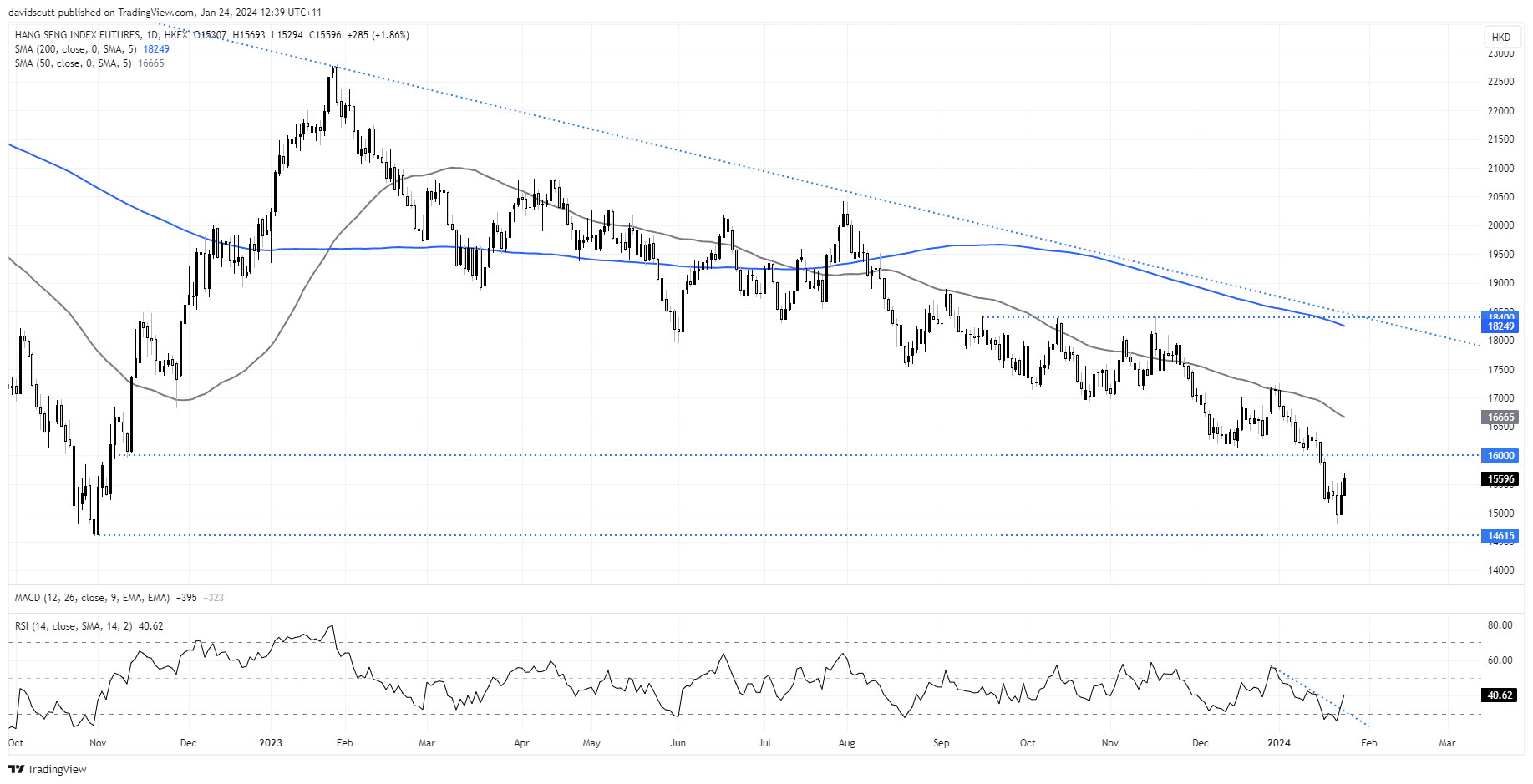There is currently a real problem of trust with China. And while the underlying reasons are complex, the simplest way to change the prevailing bearish narrative is to redress price action. The price leads the story.
- Chinese policymakers have reportedly deployed numerous measures to stabilize markets.
- China’s A50 stock index, the Hang Seng and the Chinese yuan have recently been unable to maintain strength beyond the short term.
- A sustained rally could help reverse the bearish narrative towards Chinese markets.
China’s policymakers are quickly moving to throw everything, including the kitchen sink, into propping up the country’s beleaguered stock market. The state-backed funds reportedly helped support the continent’s stock indices by purchasing several ETFs. And if Tuesday’s mail proves true, the deals could be about to get much bigger with plans to roll out a 2 trillion yen fund. Bans on short selling are being put in place and it even appears that Jack Ma has bought back Alibaba shares on the stock market after his recent bombing. Intentionally, of course.
Intervention does not guarantee lasting market gains
This has all the hallmarks of what was seen in 2015, when the Chinese stock market last experienced a horrible bear market. But now, as then, heavy-handed government is no guarantee that it will bring about a dramatic turnaround in fortune. It attacks the symptom rather than the cause. Investors are not generally fearful – just see other markets around the world hitting record highs – but they are turning to Chinese assets. Moving away from the rush to buy ETFs linked to offshore markets in China, which carry huge price premiums over the value of their underlying assets, it suggests some investors are willing to invest elsewhere than in China.
Price leads the story
There is currently a real problem of trust. And while the underlying reasons are complex, covering a number of internal and external risks, the simplest way to change the bearish narrative towards Chinese markets is to recover prices. The price leads the story.
When it comes to the yuan, Hong Kong’s Hang Seng, China’s A50 stock index, investors are desperate for proof that the measures implemented are yielding results. If they get this, cheap valuations combined with dire sentiment will provide fertile ground for significant form or recovery.

Levels to watch
Hang Seng futures came close to surpassing post-pandemic lows earlier this week, only managing to rebound thanks to the 2 trillion yen hedge fund reported by Bloomberg. Some may be willing to buy the underlying index or futures, but with skepticism so high about its effectiveness, one may need to pause and hold 16000 or even the 50-day moving average to incentivize more buyers.

This is a similar setup for A50 futures, which have seen bounces nine times at 11110 over the past two weeks.
If these sales slow down and the 50-day moving average is significantly exceeded, this would contribute to a price-driven improvement in sentiment.

The USD/CNH pair is another barometer of overall China sentiment, although it carries the caveat that PBOC policymakers continue to oppose attempts to further weaken the yuan by continually fixing the daily rate of the onshore yuan stronger than market implied levels, as well as with the depletion of yuan liquidity in Hong Kong, making it costly for speculators to short the currency.
Yes, there is massive intervention, but it might not be necessary if the USD/CNH forex trajectory continues to be lower.

Currently, the USD/CNH pair is trading around its 50-day moving average, a level it has respected numerous times in recent years, arguably more than the equivalent of the moving average of 200 days which she passed at the start of the week. Below that, horizontal support lies around 7.1150 and again from 7.1170.
If the pair manages to break and hold below it, thus clearing the lowest level reached earlier this year, it’s the type of move that will have others wondering if the bearish momentum makes sense as there is little visible support located just above 7.0100.
